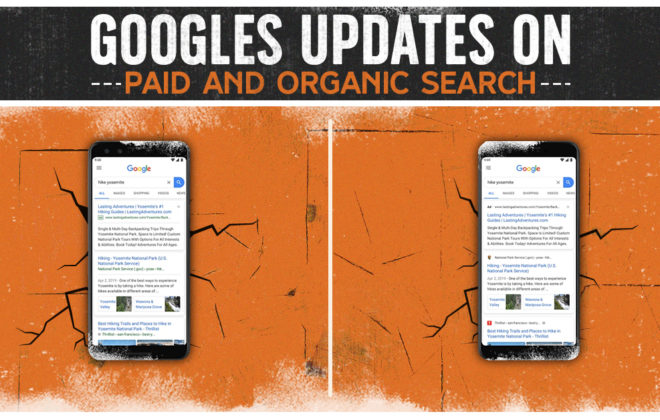
CRO & SEO: How To Combine Them To Affect Your Bottom Line
Contrary to what some marketers think, CRO (conversion rate optimization) and SEO (search engine optimization) do not actually compete with each other. CRO and SEO go hand-in-hand to drive your website’s traffic and improve conversion rates. When it comes to marketing, conversions refer to any desired action. You might be trying to convert your website visitors to newsletter subscribers or actually paying customers. Everyone’s goal is different, but what’s more important is ensuring that your SEO marketing strategy and conversion are working together.
What is CRO?
Conversion rate optimization is a strategic method of convincing visitors to your site to take a specific action. Using CTAs is one way to boost your conversion rates because you are giving your target market clear instructions on what you want them to do, whether it be to make a purchase or to contact your business for a service quote.
CRO typically involves making minor adjustments to an existing strategy and tracking the results. Although CRO and SEO work together, they are not the same metric. SEO is a way of organically growing your website traffic, increasing your exposure, while CRO focuses on the user’s experience and how to entice them into converting.
How to Use SEO and CRO Together
Look at Your Numbers
Before you can begin tying your SEO and CRO strategies together, you need to take a look at your analytics. You may have high organic traffic to your page, but if you’re not converting visitors, then your CRO strategy needs adjustment. For others, their CRO might be good, but they’re not bringing in the traffic that they need to raise those conversion numbers. In this case, you’ll want to focus your energy on creating a better SEO strategy in order to attract more web visitors to convert.
During your audit of your website, note pages where customers should be converting (such as product pages or newsletter sign-up pages) and record how much time they’re spending on the page. If people are immediately clicking away, your call-to-action may not be prominent enough.
Implement Testing
Once you’ve identified areas of your website that are receiving a lot of traffic but not converting consumers, it’s time to try testing out conversion strategies. Adjust your messaging, make the desired action more clear and implement abandoned cart strategies through email marketing and retargeting ads. You can also try using long tail keywords as a part of your SEO strategy to attract more people who are searching terms that are more relevant to your company. Focusing on keywords that are too general can give you good SEO results in that you’re attracting a lot of traffic, but many of those visitors may not actually be looking for the products that you’re selling.
This part of the process may take time as you try different methods and record the results. Be sure to set a specific testing time, so that you can analyze the results.
Adjust Strategy Based on Results
After you’ve tested different conversion strategy methods, you need to review the results and determine which elements are most beneficial to CRO. Focusing on improving and narrowing down your SEO strategy to attract your specific audience will help boost conversions as you’re bringing more people to your site who are actually interested in your business. Use the strategies from your testing phase that improved results as a long-term solution to boosting CRO.
If you’re looking for a way to tie your CRO and SEO strategies together, Clicks and Clients can help. Our team of experts has a comprehensive knowledge of these optimization strategies and can create a plan to track each metric and improve both simultaneously.
Paul Rakovich
Browse All PostsTell Us Your Goals
Recent Posts
- Google PMax: Get the Most Out of Your Ad Campaigns While Combating Fraud
- Lead Ads Don’t Have to Suck: How to Leverage Them Correctly
- Why More Expensive PPC Ads are Almost Always Worth It
- Unlock the Secrets of Organic CPA: The Ultimate Guide to Cost Per Acquisition
- Secrets We’ve Learned from Years Working with Paid Account Reps at Meta, TikTok, LinkedIn and Google

